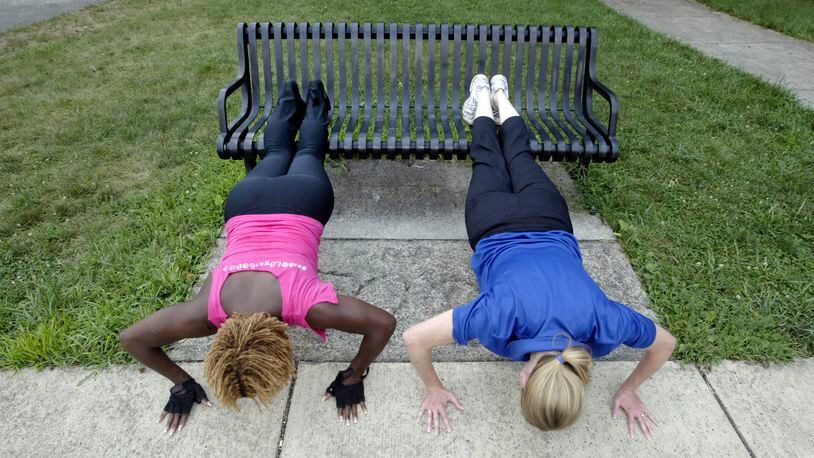Squats and Lunges. These are a number one go-to for those looking to keep the legs and hips strong. Muscles worked include the glutes, quadriceps and hamstrings. If unfamiliar with squats, use a chair and practice lightly sitting and then standing. Looking straight ahead, reach back with the hips toward the seat of the chair and then bend the knees as you squat. When standing back up, avoid allowing the upper body to travel too far forward. Instead, do your best to use the leg muscles to power through. As strength increases, stand behind and hold onto the back of the chair while squatting. Eventually work up to doing this exercise without the chair, free-standing. Tip: Do not come down too far! The maximum recommended range of motion is that thighs should be no further than parallel to the floor.
Lunges work one leg at a time. To initiate the movement, take a large step forward and while keeping the torso upright, slowly bend both knees until the back knee is close to the floor and front thigh almost parallel to the ground. Slowly push body weight back up to starting position. As with squats, beginners should limit range of motion initially as the legs may not be strong enough to execute the ‘up’ phase of the exercise.
Shoulder press. This exercise strengthens the front, side and rear deltoid muscles as well as the triceps (back of the arms). Using dumbbells or resistance bands, slowly push arms upward, as if trying to touch the ceiling.
Because compound movements work more than one muscle group at the same time, it not only lessens the duration of the workout but also burns significantly more calories minute to minute than isolation exercises. Isolation exercises are those that use only one joint in the movement, such as a bicep curl, (elbow) leg extension (knee) or dumbbell lateral raise (shoulder). Experts recommend checking with your doctor before beginning a new exercise program. This is especially true if its been a while since you’ve worked out or have any medical conditions or joint problems.
Marjie Gilliam is an International Sports Sciences Master certified personal trainer and fitness consultant. She owns Custom Fitness Personal Training Services LLC. Send email to marjie@ohtrainer.com.
About the Author
